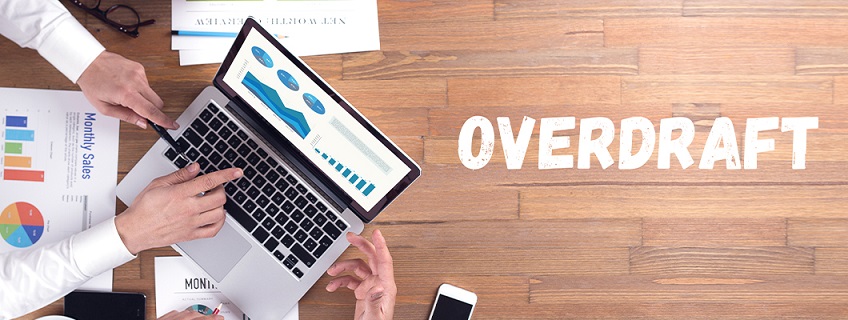
Difference between Overdraft and Personal Loan
Posted on Friday, March 29th, 2024 | By IndusInd Bank
When it comes to managing financial needs and emergencies, individuals often turn to borrowing options such as overdraft facilities and personal loans. While both serve as valuable tools for accessing additional funds, they differ significantly in terms of features, benefits, and repayment terms. Let’s delve into the variances between overdrafts and personal loans to help you navigate the borrowing landscape effectively.
Understanding Overdraft Facilities
An overdraft facility is a financial arrangement offered by banks that allows account holders to withdraw funds exceeding their available balance up to a predetermined limit. Essentially, an overdraft provides individuals with the flexibility to access additional funds on an as-needed basis, like having a line of credit linked to their bank account. Here are some key features of overdraft facilities.
1. Flexibility: Overdraft facilities offer borrowers flexibility in accessing funds, allowing them to withdraw money as needed up to the agreed-upon limit. This makes overdrafts suitable for managing short-term cash flow gaps or covering unexpected expenses.
2. Interest on Utilized Amounts: Borrowers are only charged interest on the amount of funds utilized from the overdraft facility, not the entire approved limit. Interest rates on overdrafts are typically higher than those on personal loans, but borrowers have the advantage of paying interest only on the amount they use.
3. Revolving Credit: Overdraft facilities operate as revolving lines of credit, meaning that as borrowers repay the borrowed amount, the available credit limit is replenished, allowing for ongoing access to funds as needed.
4. No Fixed Repayment Schedule: Unlike personal loans, overdraft facilities do not have a fixed repayment schedule. Borrowers must make minimum payments to cover the interest charges and can repay the borrowed amount at their own pace if they stay within the agreed-upon limit.
Exploring Personal Loans
Personal loans, on the other hand, are traditional lending products offered by financial institutions that provide borrowers with a lump sum of money upfront, which is repaid over a fixed term with interest. Unlike overdraft facilities, personal loans come with predetermined loan amounts, repayment schedules, and fixed interest rates. Here are some key features of personal loans.
1. Fixed Loan Amount: Personal loans offer borrowers a fixed loan amount, which is determined at the time of application based on factors such as creditworthiness, income, and repayment capacity. Once approved, borrowers receive the entire loan amount upfront.
2. Fixed Interest Rates: Personal loans come with fixed interest rates, meaning that the interest rate remains constant throughout the loan term. This allows borrowers to budget effectively and plan for consistent monthly payments.
3. Structured Repayment Schedule: Personal loans require borrowers to adhere to a structured repayment schedule, typically consisting of equal monthly installments over the loan term. This provides borrowers with clarity and predictability regarding their repayment obligations.
4. Suitable for Large Purchases: Personal loans are ideal for financing large expenses such as home renovations, weddings, or major purchases, where borrowers require a significant sum of money upfront and prefer structured repayment terms.
Choosing Between Overdrafts and Personal Loans
When deciding between overdraft facilities and personal loans, it’s essential to consider your financial needs, preferences, and borrowing habits. Here are some factors to consider.
- Interest Costs: Compare the interest rates and costs associated with overdraft facilities and personal loans to determine which option offers the most favorable terms based on your borrowing needs and repayment capacity.
- Repayment Flexibility: Consider whether you prefer the flexibility of making minimum payments on an overdraft facility or the structured repayment schedule of a personal loan.
- Purpose of Borrowing: Evaluate the purpose of borrowing to determine which option aligns best with your financial goals. Overdraft facilities are ideal for managing short-term cash flow needs, while personal loans are better suited for financing larger expenses with fixed repayment terms.
Conclusion
Overdraft facilities and personal loans serve as valuable financial tools for accessing additional funds when needed. While overdrafts offer flexibility and immediate access to funds on an as-needed basis, personal loans provide borrowers with lump-sum amounts and structured repayment terms. By understanding the differences between these two borrowing options and evaluating your financial needs and preferences, you can make informed decisions to meet your short-term and long-term financial goals effectively.
If you’re looking for an instant personal loan at best-in-class rates, then do check out IndusInd Bank Personal Loan that is mindfully designed to fit into the varied needs of individuals as per their lifestyles. With IndusInd Bank Personal loan, you get to enjoy instant approval, quick disbursal, and flexible repayment tenure options. That’s not all, its application process is 100% paperless with minimal or low processing fee.
Disclaimer: The information provided in this article is generic in nature and for informational purposes only. It is not a substitute for specific advice in your own circumstances. Hence, you are advised to consult your financial advisor before making any financial decision. IndusInd Bank Limited (IBL) does not influence the views of the author in any way. IBL and the author shall not be responsible for any direct/indirect loss or liability incurred by the reader for taking any financial decisions based on the contents and information.



 Offers
Offers Rates
Rates Debit Card Related
Debit Card Related Credit Card Related
Credit Card Related Manage Mandate(s)
Manage Mandate(s) Get Mini Statement
Get Mini Statement
 categories
categories Bloggers
Bloggers Blog collection
Blog collection Press Release
Press Release


